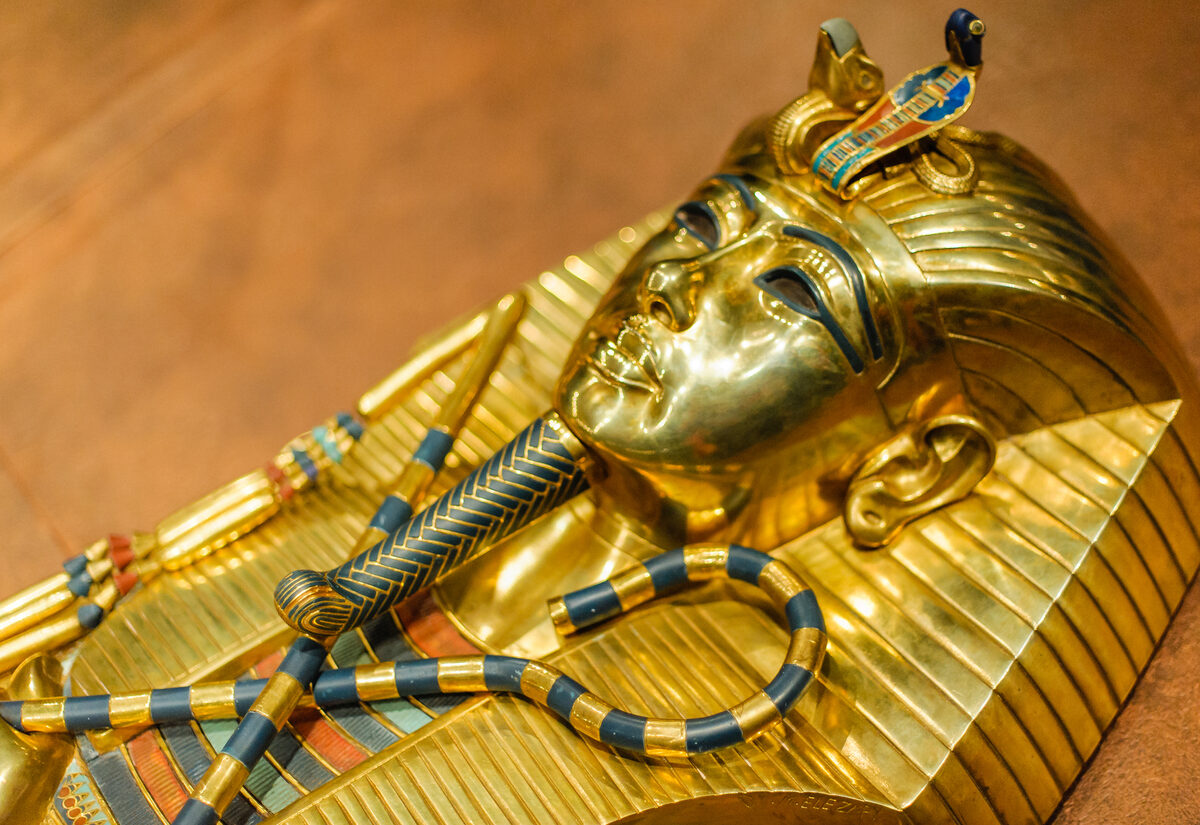Incredible Child Rulers Who Outperformed Adult Monarchs
- Jennifer Still
- May 5, 2025
 Getty Images/iStockphoto
Getty Images/iStockphotoThroughout history, child monarchs have often been perceived as mere figureheads, overshadowed by regents and advisers. However, several young rulers defied these expectations and left profound impacts on their kingdoms, demonstrating wisdom, strategic intelligence, and leadership abilities far beyond their years. Here are several extraordinary child rulers who not only overcame their youth but outperformed many of their adult counterparts, providing historical insights into how maturity and capability can surpass age.
Tutankhamun of Egypt (c. 1332–1323 BCE)
Tutankhamun, ascending to Egypt’s throne at around nine or ten, inherited a nation in turmoil following radical religious changes implemented by his predecessor, Akhenaten. Despite his youth, Tutankhamun rapidly set about restoring stability. He reinstated traditional Egyptian polytheism, reversing Akhenaten’s monotheistic reforms that had alienated the powerful priesthood and disrupted the societal order. Under his guidance, temples were rebuilt and restored, reestablishing religious harmony and revitalizing the nation’s economy and cultural identity.
Although historically overshadowed by the discovery of his lavish tomb in 1922, recent scholarship has increasingly highlighted Tutankhamun’s political and diplomatic accomplishments. He notably enhanced diplomatic relationships with surrounding kingdoms, such as Nubia and the Hittites, helping to consolidate Egypt’s territorial integrity and influence. Tutankhamun’s brief reign thus laid crucial foundations for his successors, stabilizing Egypt during a volatile historical moment and demonstrating political maturity uncommon for rulers of his age.
Josiah of Judah (c. 640–609 BCE)
King Josiah ascended the throne of Judah at just eight years old, inheriting a kingdom suffering from religious fragmentation and widespread societal decay. Initially guided by advisers, Josiah quickly demonstrated independent and decisive leadership. His sweeping religious reforms, prompted by the rediscovery of the Book of the Law (believed by scholars to be Deuteronomy), profoundly reshaped Judah’s religious practices, abolishing pagan worship and restoring traditional monotheistic rituals and observances.
Josiah’s governance extended far beyond religion, as he revitalized the judicial system and championed ethical reforms that improved social welfare and stability. His administration oversaw extensive infrastructure improvements, including temple repairs and urban development, reinforcing his legacy as a transformative leader. Despite his reign ending abruptly due to his tragic death in battle against Egypt, Josiah’s leadership remains a historical benchmark, celebrated for its moral clarity, strategic foresight, and substantial contributions to Judah’s cultural renaissance.
Ptolemy XIII of Egypt (c. 51–47 BCE)
Ascending the throne at just ten years old, Ptolemy XIII initially shared power with his famous sister, Cleopatra VII. Although historically overshadowed by Cleopatra, Ptolemy XIII demonstrated notable political assertiveness and adeptness in navigating the complexities of Roman influence. He actively engaged in significant diplomatic relationships, involving figures like Julius Caesar and Pompey the Great, reflecting an advanced understanding of the geopolitical intricacies of his era.
During the Alexandrian War, Ptolemy XIII notably played an active military and strategic role against Caesar, showcasing leadership abilities rare for his young age. Although ultimately defeated and overshadowed by Cleopatra’s subsequent legacy, his proactive involvement in political and military strategy illustrated a precocious grasp of leadership dynamics. His short reign underscores how youthful rulers, even when facing formidable adversaries, can significantly influence historical events.
King Baldwin IV of Jerusalem (1161–1185)
Baldwin IV, famously known as the ‘Leper King,’ ascended Jerusalem’s throne at thirteen amidst continuous external threats and internal divisions. Despite suffering from leprosy, Baldwin displayed exceptional bravery, strategic acumen, and diplomatic skill. His leadership proved critical during conflicts with the powerful Sultan Saladin, as he orchestrated defensive measures and diplomatic alliances that temporarily secured Jerusalem’s survival.
Baldwin’s military genius was vividly demonstrated at the Battle of Montgisard in 1177, where his vastly outnumbered forces achieved an unexpected and decisive victory against Saladin’s army. Beyond military prowess, Baldwin’s diplomatic savvy maintained internal cohesion among Jerusalem’s diverse factions, securing political stability. His short reign, despite severe illness, marked a period of resilience and fortitude, significantly prolonging the Crusader state’s existence and earning Baldwin a lasting historical reputation as a wise and courageous monarch.
Emperor Kangxi of China (1661–1722)
Emperor Kangxi ascended the Qing Dynasty throne at seven and began independently ruling at thirteen, immediately confronting internal factional struggles and external threats. His reign, spanning six decades, stands as one of China’s most illustrious, marked by territorial expansion, administrative reform, and cultural prosperity. Kangxi’s diplomatic acumen notably secured peace with Russia through the Treaty of Nerchinsk (1689), stabilizing China’s expansive northern frontier.
Under Kangxi’s insightful leadership, China experienced significant advancements in science, technology, and scholarship, particularly promoting Confucian principles and initiating encyclopedic projects such as the Kangxi Dictionary. His administrative reforms enhanced tax collection efficiency, government transparency, and justice, contributing significantly to national prosperity. His reign is widely viewed as a golden age, showcasing how youthful rulers can govern with maturity and foresight, dramatically enhancing their nation’s stability and cultural richness.
Queen Christina of Sweden (1632–1654)
Queen Christina ascended Sweden’s throne at just six, quickly becoming known for her extraordinary intellect and independence. Under her patronage, Sweden flourished as a centre of culture and learning, attracting renowned scholars, scientists, and artists. Christina transformed Stockholm into a European cultural hub, significantly contributing to Sweden’s intellectual and artistic development and raising the nation’s international profile.
Politically, Christina displayed remarkable maturity, notably influencing the negotiations leading to the Peace of Westphalia in 1648, which ended the devastating Thirty Years’ War and reshaped Europe’s political landscape. Her surprising abdication at twenty-eight, motivated by deep religious convictions and personal introspection, reflected profound self-awareness and decisiveness, rare for rulers of any age. Christina’s reign, marked by intellectual dynamism and political sophistication, underscores how youthful monarchs can profoundly influence their nations and broader geopolitical outcomes.
Akbar the Great of the Mughal Empire (1556–1605)
Akbar ascended the Mughal throne at thirteen, rapidly becoming one of India’s greatest rulers. His reign is celebrated for military brilliance, extensive administrative reforms, and remarkable religious tolerance, significantly expanding the Mughal Empire’s power and prosperity. Early victories against formidable opponents secured critical territorial expansions and established Akbar’s authority decisively.
His progressive governance featured groundbreaking social reforms, including abolishing the discriminatory Jizya tax, implementing standardized revenue systems, and promoting agricultural improvements that enhanced economic productivity. Akbar fostered a culturally inclusive environment, facilitating intellectual exchanges and harmony among diverse religious and ethnic groups. His rule exemplifies visionary leadership, achieving extraordinary social cohesion, economic prosperity, and cultural vibrancy, marking his reign as one of India’s most celebrated historical eras.
King Louis XIV of France (1643–1715)
Louis XIV became king at four, officially taking power during adolescence, eventually ruling France for an unprecedented seventy-two years. His reign radically transformed France into Europe’s leading political, economic, and cultural powerhouse. Louis XIV famously established absolute monarchy, dramatically centralizing governmental power and influencing Europe’s political framework profoundly.
His ambitious projects, notably the extravagant Palace of Versailles, symbolized his absolute authority and significantly influenced European architectural and artistic trends. Louis XIV’s governance involved substantial administrative reforms, including streamlining tax systems, modernizing legal frameworks, and extensively supporting arts and sciences. Despite controversies surrounding absolutism, his reign significantly elevated France’s international prestige, demonstrating how effective leadership and visionary strategies can emanate from even the youngest rulers.



